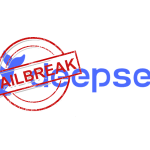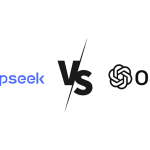The Best Backend Frameworks in 2024: A Comprehensive Guide
In the rapidly evolving landscape of web development, choosing the right backend framework is a crucial decision that can significantly impact the efficiency, scalability, and overall success of your application. As we progress through 2024, several backend frameworks have distinguished themselves as top contenders, each offering unique features and benefits. This comprehensive guide explores the leading backend frameworks of 2024, providing an in-depth analysis of their pros, cons, and ideal use cases to help you make an informed choice that aligns with your project’s requirements.
What is a Backend Framework?
A backend framework is a collection of tools, libraries, and best practices that facilitate the development of server-side applications. These frameworks provide a structured environment for managing server logic, database interactions, and application workflows, allowing developers to focus on building robust, scalable, and maintainable applications. By streamlining repetitive tasks, backend frameworks enhance productivity and help ensure that applications adhere to industry standards and best practices.
Best Backend Frameworks of 2024
1. Node.js
Node.js is renowned for its non-blocking, event-driven architecture, making it ideal for applications requiring high performance and scalability. Built on Chrome’s V8 JavaScript engine, Node.js allows developers to use JavaScript on both the frontend and backend, fostering a unified development environment.
Pros:
- High Performance: Node.js leverages asynchronous programming, enabling it to handle numerous connections simultaneously without blocking threads, making it ideal for real-time applications.
- Scalability: Its event-driven, non-blocking I/O model supports scalability, allowing Node.js to efficiently manage a large number of concurrent connections.
- Rich Ecosystem: The npm (Node Package Manager) offers an extensive repository of libraries and tools, reducing development time by providing ready-made modules for almost any functionality.
Cons:
- Callback Hell: Managing asynchronous operations in Node.js can lead to complex nested callbacks, making the code difficult to read and maintain.
- Maturity: While widely adopted, Node.js is relatively newer compared to some traditional backend frameworks, leading to potential stability concerns in certain enterprise environments.
Ideal Use Cases:
- Real-time applications: Such as chat apps, live streaming platforms, and online gaming.
- Single-page applications (SPAs): Where client-side rendering requires efficient backend support.
- Data-intensive applications: Node.js excels in handling large volumes of data with minimal latency.
2. Django
Django, a high-level Python-based backend framework, is lauded for its “batteries-included” philosophy, offering an array of built-in features that accelerate development. It emphasizes rapid development and pragmatic design, making it a favorite among developers for complex and secure applications.
Pros:
- Comprehensive: Django comes with an out-of-the-box admin panel, authentication systems, and an Object-Relational Mapping (ORM) tool, significantly reducing the need for third-party packages.
- Security: Django follows stringent security practices, offering protection against SQL injection, cross-site scripting (XSS), cross-site request forgery (CSRF), and other common vulnerabilities.
- Scalability: Django’s architecture supports scaling from small, single-server setups to large, distributed systems, making it versatile across various project sizes.
Cons:
- Heavyweight: Due to its extensive feature set, Django can be overkill for smaller, simpler applications, potentially leading to unnecessary complexity and resource consumption.
- Learning Curve: Developers must be well-versed in Python and Django’s conventions to fully leverage its capabilities, which may require a steep learning curve for beginners.
Ideal Use Cases:
- Content Management Systems (CMS): Django’s admin interface and extensibility make it ideal for managing content-heavy websites.
- E-commerce Websites: With its robust security features and scalability, Django is perfect for handling transactions and user data.
- Social Media Platforms: Django’s ORM and built-in authentication facilitate the rapid development of user-centric platforms.
3. Spring Boot
Spring Boot, an extension of the Spring framework, simplifies the development of Java-based, production-ready applications. It abstracts much of the configuration and setup required by traditional Spring applications, allowing developers to focus on building features rather than boilerplate code.
Pros:
- Microservices Ready: Spring Boot is designed with microservices in mind, providing tools and frameworks that make it easier to build, deploy, and manage microservices architectures.
- Robust Security: Spring Boot integrates seamlessly with Spring Security, offering a comprehensive security framework that includes authentication, authorization, and protection against common threats.
- Strong Community: With a large user base and extensive documentation, Spring Boot benefits from a vibrant community that continually contributes to its growth and improvement.
Cons:
- Complex Setup: Although Spring Boot simplifies much of the configuration, setting up more advanced features can still be challenging for those unfamiliar with the Spring ecosystem.
- Resource Intensive: Java-based applications, particularly those built with Spring Boot, can be resource-intensive, requiring more memory and processing power compared to lightweight frameworks.
Ideal Use Cases:
- Enterprise Applications: Spring Boot’s robustness and security features make it ideal for large, enterprise-grade applications.
- Microservices Architecture: Its modular design and extensive support for microservices make Spring Boot a go-to choice for distributed systems.
- Complex, Large-Scale Projects: Projects requiring a high degree of customization and integration with other enterprise systems benefit from Spring Boot’s flexibility and power.
4. Ruby on Rails
Ruby on Rails (RoR), often simply called Rails, is a web application framework written in Ruby. It emphasizes convention over configuration, which streamlines the development process by reducing the number of decisions developers need to make.
Pros:
- Productivity: Rails’ convention-driven approach allows developers to focus on what makes their application unique, rather than worrying about configuration details, leading to faster development cycles.
- Community: Rails boasts a large, active community that offers a wealth of plugins, tutorials, and support, ensuring developers can find solutions to almost any problem.
- Rapid Prototyping: Rails is particularly well-suited for startups and projects that require quick iterations, allowing teams to build prototypes and MVPs (Minimum Viable Products) rapidly.
Cons:
- Performance: Rails is not the fastest framework available, and performance can be a concern, particularly for high-traffic applications.
- Scalability: While Rails is capable of scaling, it may not be as efficient as other frameworks when dealing with very large-scale applications, often requiring additional resources to maintain performance.
Ideal Use Cases:
- Prototyping and MVP Development: Rails’ speed and simplicity make it ideal for quickly building and iterating on new ideas.
- E-commerce Platforms: Rails’ strong community support and available plugins make it a solid choice for building online stores.
- Social Networking Sites: The framework’s ease of use and flexibility make it suitable for developing feature-rich social platforms.
Choosing the best Backend Framework
Project Requirements
Identify the specific needs of your project. For instance, Node.js excels in real-time applications, while Django is ideal for projects requiring robust security features.
Developer Expertise
Consider your team’s expertise. A backend framework like Django or Spring Boot can be highly productive if your team is proficient in Python or Java, respectively.
Community and Support
A strong community and extensive documentation can be invaluable. Backend frameworks like Django and Spring Boot offer substantial support, making them reliable choices.
Conclusion
Choosing the right backend framework is pivotal for the success of your web application. Node.js, Django, Spring Boot, and Ruby on Rails each bring unique strengths to the table. Evaluate your project requirements, team expertise, and the available support ecosystem to make an informed decision. With the right backend framework, you can ensure a smoother development process and a robust, scalable application.
By understanding the strengths and weaknesses of each backend framework, you can choose the one that best aligns with your project’s needs, ensuring a successful and efficient development process.
Elevate Your Project with Our Backend Development Services
If you’re seeking expert assistance in building your next web application, our professional backend development services are here to help. We specialize in leveraging the latest backend frameworks to create robust, scalable, and high-performance applications tailored to your specific needs.
Why Choose Our Services?
Expertise in Top Backend Frameworks
Our team is proficient in Node.js, Django, Spring Boot, Ruby on Rails, and more.
Custom Solutions
We tailor our services to meet your unique requirements, ensuring a personalized approach for every project.
Quality Assurance
Rigorous testing to ensure your application is secure, bug-free, and performs optimally.
Timely Delivery
We respect your deadlines and strive to deliver on time, ensuring your project stays on schedule.
Don’t miss the opportunity to elevate your backend development project. Contact us today to learn more about how we can help you achieve your goals.






